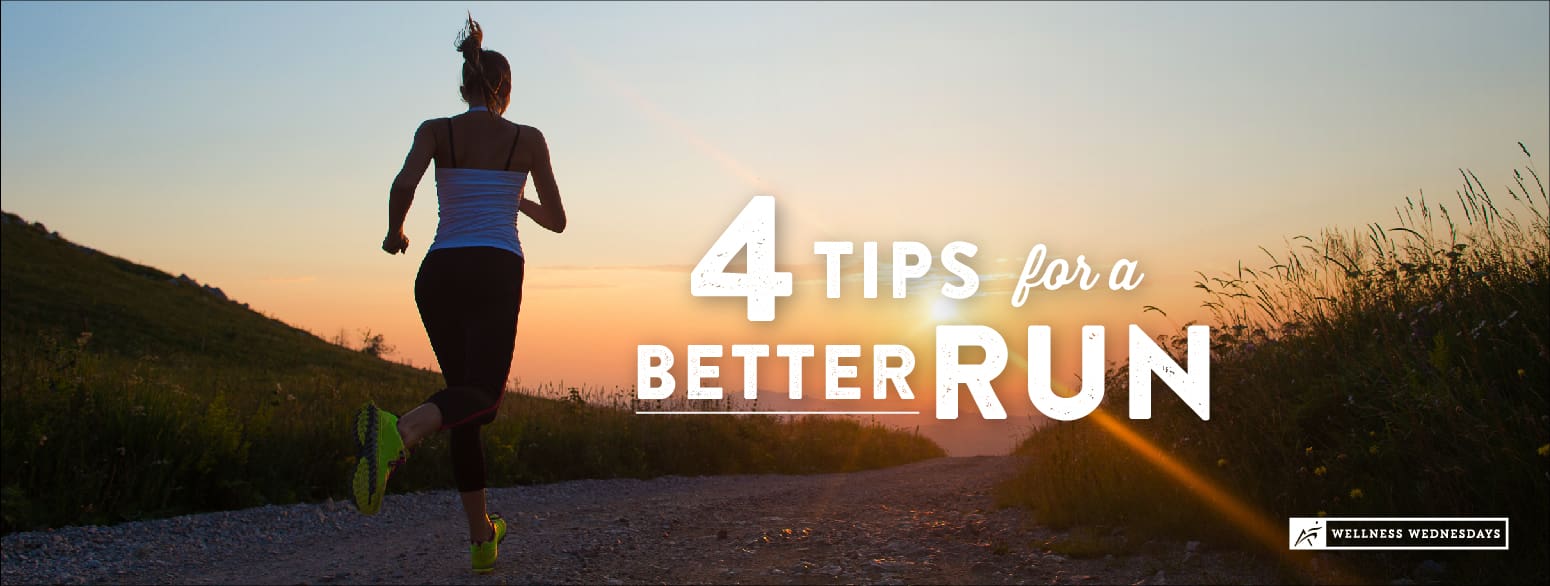Everyone has their own reason for running. Some do it for their health. Some do it to relieve stress. While others run just for fun. But for every motivation and reason to run, there are just as many tips to help you run better.
So which running tips are the real deal, and which ones are bunk? We’re here to help you sift through the clutter and find out how to make your next run the best one yet.
Eat Smart – Run Smart
There are a lot of different philosophies on eating before your workout. Some say that chowing down on a boatload of carbs is the way to go, while others say to only eat a spoonful of peanut butter and a banana.
But what you eat isn’t as important as how much you eat. Filling up and going for a run can slow you down. So, if you chow down on a five-course meal, wait a while before hitting the road. Or, if you must eat right before a run, keep your meal small and light.
The same goes for drinking. It’s important to stay hydrated, of course, but you don’t want to overdo it. Ensure that you’ve been drinking water throughout the day of your run, and drink an 8-oz. glass of water about 30 minutes before you go out.
Stretch It Out
Stretching is a key factor in any good workout. If you go straight into a fifteen-mile run on cold muscles, you’ll definitely feel it later. Dynamic stretching before exercise lets your muscles get warmed up for what’s to come.
But that doesn’t mean to make your warm-up just as intense as your workout. Get your ankles, hips, and knees ready with some gentle rotations, and make sure your leg muscles are ready with some light extensions. Too much still, static stretching can also be harmful to your muscles. Be sure to keep your warm-up light and moving with dynamic, fluid stretches to get your muscles ready to run.
Get the Right Kicks
Good shoes are one of the most important ingredients to a good run. They can help improve posture, relieve pressure on your ankles, and can keep you from tiring out too early in your run. But sadly, shoes don’t come with an odometer like cars do. That’s why you should keep a solid record of your mileage after each run.
After about 400 miles, the soles of your shoes become so compressed that the material doesn’t bounce back as quickly as it should (or at all). By replacing your shoes regularly, your legs, ankles, and feet will be able to absorb more impact, and that means a better run.
Go Too Big, Go Home
Everyone has heard the old adage “Go big or go home.” This is a great motto, but if you go too big, you’ll be going home and staying there. Pushing yourself too hard without gradually working up to it can cause big trouble for your muscles, and sometimes it can even cause permanent damage.
So instead of going straight for that marathon run or diving head first into the Iron Man Challenge, warm up to it. Your body will tell you when it’s time to go harder. Before too long, you’ll be going big and going home a champ.
There are a lot of factors that go into making a great run, and these four tips are a great place to start. But sometimes, you do everything right and you still come home with an aching back, sore ankles, and throbbing knees. That’s where we come in. Don’t let pain keep you from the perfect run. Make an appointment at Airrosti and see what we can do to relieve your pain and help you run better, faster, and longer.
Read our Medical Disclaimer here.










